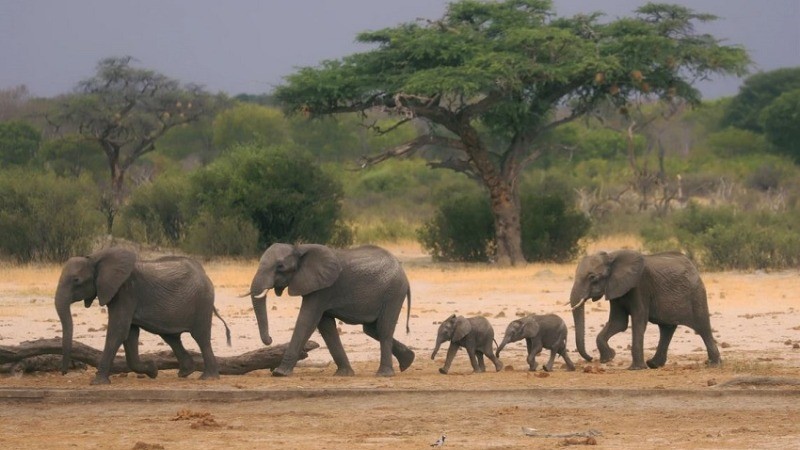
Zimbabwe and Namibia have announced plans to cull hundreds of wild elephants and other animals to provide food for residents facing severe drought conditions. The two southern African nations are taking these steps as drought intensifies and resources become increasingly scarce.
On Monday, Zimbabwe confirmed it would allow the killing of 200 elephants, with the meat distributed to communities in need. In Namibia, a similar operation is already underway, with more than 700 wild animals, including 83 elephants, set to be culled.
Tinashe Farawo, spokesperson for the Zimbabwe National Parks and Wildlife Management Authority, said hunting permits would be issued to local communities, while the agency would also cull some of the 200 elephants. "We will start culling as soon as we have finished issuing out permits," Farawo said.
The elephants will be taken from regions where the population has exceeded sustainable levels. One such area is Hwange National Park in western Zimbabwe, where competition for food and water between humans and wildlife has intensified due to rising temperatures. Hwange currently holds more than 45,000 elephants, though it can only sustain 15,000, Farawo explained. Zimbabwe’s total elephant population stands at approximately 100,000, which park officials say is double the capacity of the country's national parks.
The El Niño weather pattern has exacerbated drought conditions, with the parks agency reporting that more than 100 elephants died from the lack of water in December. Farawo warned that more animals could perish in the coming weeks as the country enters its hottest period.
Zimbabwe’s Environment Minister Sithembiso Nyoni recently informed Parliament that she had approved the culling plan, emphasizing the need to manage the elephant population. “Zimbabwe has more elephants than our forests can sustain,” Nyoni said. She added that the government was preparing a plan to cull the elephants and ensure the meat reaches communities in need.
Meanwhile, the Namibian government approved the culling of 723 animals last month. In addition to elephants, this includes hippos, buffalos, zebras, and impalas. These animals will be sourced from five of Namibia's national parks to reduce conflicts between humans and wildlife.
Romeo Muyunda, spokesperson for Namibia's environment department, said the decision was necessary to ensure the sustainable use of the country’s natural resources. “This is a prime example that conservation of game is really beneficial,” he said.
While neighboring Botswana, home to the world’s largest elephant population, has not announced similar plans, Zimbabwe and Namibia face mounting pressure due to the drought and unsustainable wildlife populations.
Guyo Roba, a food security expert from the Kenya-based Jameel Observatory, acknowledged the severity of the drought in the region and said the measures taken by Zimbabwe and Namibia were understandable given the circumstances.
WHO Calls For Enhanced Diagnosis on World Patient Safety Day
Israel Health Ministry Launches First Suicide Prevention Campaign, Urges Men to Seek Help
World Ozone Day Explained: How September 16 Impacts Our Planet’s Future